
10 minute read
Ag & Range
Smoke rises from the Aristocrat Fire in the southeastern plains of Chadron, Friday afternoon. In total the fire burned 391 acres of land south of the CSC campus. Started by lightining the night of Aug. 27, firefighters had the blaze’s forward progression stopped Friday.
FIRE: NATURE’S GREATEST ENIGMA
Advertisement
Photo by Brandon Davenport A firefighter leaves the Forest Service station on a four-wheeler to assist in managing the Aristocrat Fire.

By Kamryn Kozisek Ag and Range Editor
At one extreme, fire is nature’s fiercest killer. At the other extreme, it’s nature’s most prolific regenerator.
As of Sept. 1, there were 75 large active wildfires in the U.S., burning 2,050,511 acres. There are 19 active wildfires in California and 13 in Arizona according to the National Interagency Center.
In Nebraska, the Hubbard Gap Fire in the Wildcat Hills outside of Mcgrew has burned close to 4,000 acres according to the Nebraska Emergency Management Agency. As of Aug. 28, 25 volunteer fire departments were working to put out the fire. Six volunteer firefighters have been injured during these efforts. As of Sept. 1, the Hubbard Gap Fire was 80% contained,
A fire nicknamed Aristocrat burned 391 acres outside of Chadron, Thursday evening. The fire began Thursday night from a lightning strike and was discovered mid-morning Friday. The Forest Service and the Chadron Volunteer Fire Department stopped the forward progression of the fire by Friday evening.
Fire has been a part of ecosystems, even before European settlement, fire burned through ecosystems until they were naturally put out. After settlers began building infrastructure, fire was taken out of the ecosystem causing overstocked forests and overgrown grasslands according to Timothy Buskirk, United States Department of Agriculture Forest Service agent.
“Science has taught us that fire is one of the best tools we have to sustain the forest,” Buskirk said, “The more we can get it out there on the ground under our terms, the better we will be moving into the future.”
In recent history, to reverse the damage of years of fire suppression, prescribed fires became an important management tool in preventing wildfires and improving ecosystem conditions.
“We have to acknowledge that we live in a fire prone system,” CSC Professor Anthony Perlinski said. Wildfires that are hard to control and burn thousands of acres are deemed megafires. These megafires are damaging to the ecosystem causing soil sterilization. Megafires can be reduced by prescribed burning to decrease fuel loads. To prevent fires in the Chadron area in the future, prescribed burning will continue to be an important management tool.
“There is absolutely potential with wildfire to see some ecological damage,” Perlinksi said.
Prescribed fires help improve the ecosystem by re juvenating the understory and improving nutritional quality of plants. Large grazing animals are attracted to recently burned areas because of increased nutri tional quality.
Rangeland Professor Teresa Frink said, “Open ter rain species like elk and mule deer will be out there in a matter of weeks, grazing in those areas that have been burned as soon as vegetation begins to emerge.”
Prescribed burning has become more common among ranchers to improve land quality and decrease the amount of invasive species. Fire on grazing land can be devastating to a ranch in the short term, but in the long run, it will improve grazing, making it an economically viable management tool.
“As a general statement, if we were to use pre scribed fire routinely to control fuel loads,” Ron Bolze, CSC Rangeland professor said. “Whenever we get the occasional log fire it would be a lot less destructive.”
Photo by Brandon Davenport Smoke rises from the Aristocrat Fire in the southeastern plains of Chadron, Friday afternoon. In total the fire burned 391 acres of land south of the CSC campus. Started by lightining the night of Aug. 27, firefighters had the blaze’s forward progression stopped Friday.
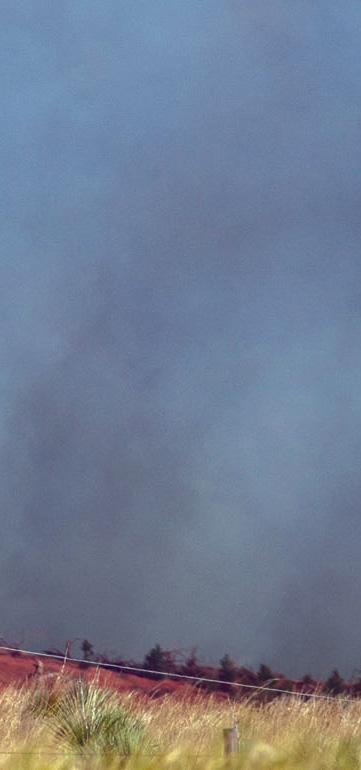

BOTTOM LEFT: A firefighter’s helmet and gloves rest on the back of a USDA Forest Service four-wheeler Friday afternoon. TOP LEFT: An airplane carrying fire retardant flies in front of the moon while responding to a fire outside of Chadron, Friday afternoon BOTTOM: Chris Rolfsmeyer, 15, Thomas Kaus, 15 and Parker Fischer, 15, of Chadron, watch from a distance as multiple airplanes drop retardant on the Aristocrat Fire, Friday afternoon.
Photo by Brandon Davenport
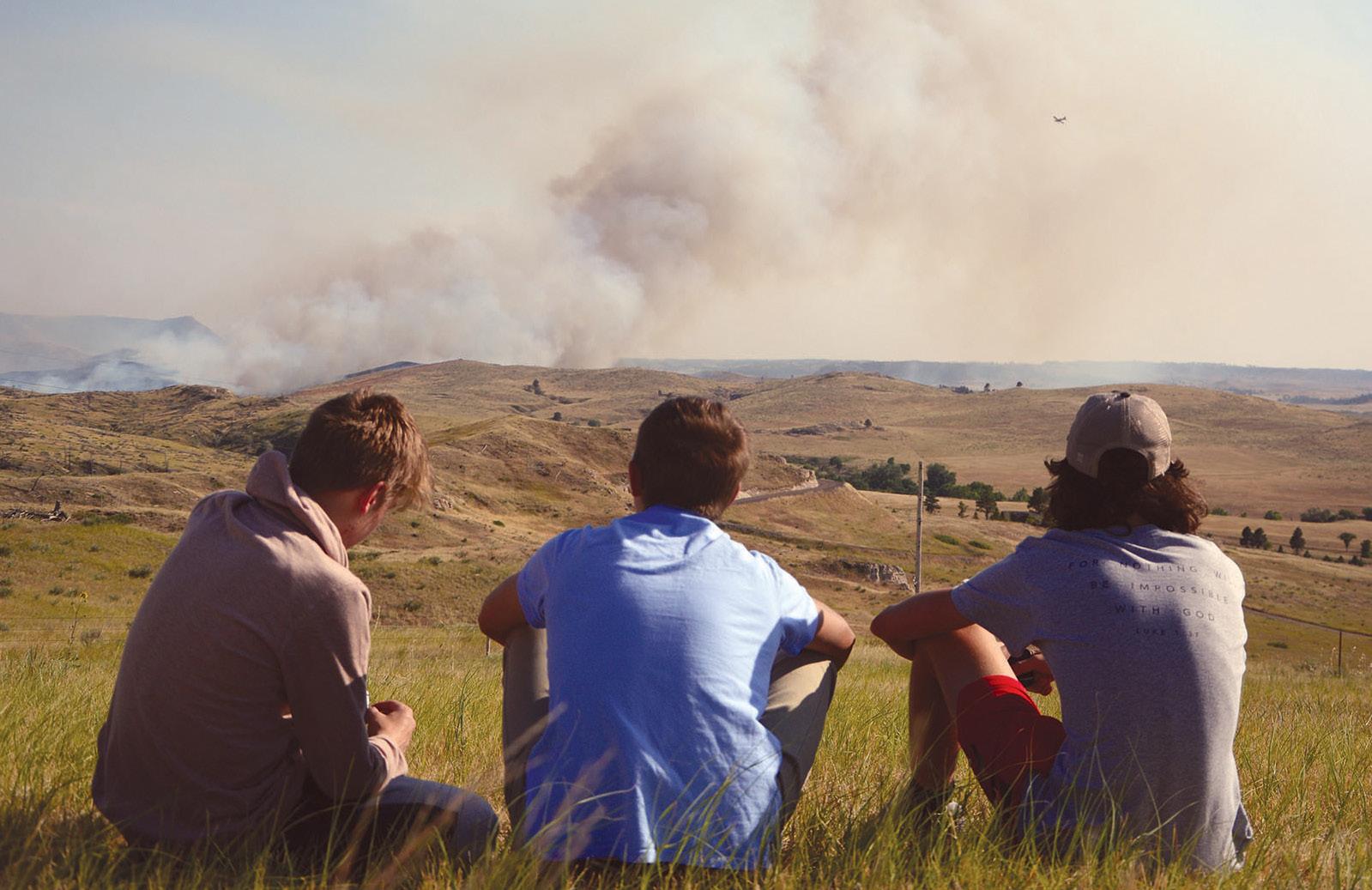
Photo by Brandon Davenport

Photo by Devin Fulton

Photo by Devin Fulton An airplane spreads fire retardant on the Aristocrat Fire, Friday afternoon.
Comics
Due to licensing restrictions, The Eagle cannot post the content on this page in online format. Please see our print version or purchase a subscription by contacting subscriptions@csceagle.com to view this content.
Lifestyles
The Eagle file photo In the last decade, tabletop games have seen a resurgence in popularity, eschewing the digital world in favor of friends gathered around a table. A global pandemic has made such gatherings difficult, but the Plainswalkers, CSC’s gaming club, is intent on soldiering however they can to continue to bring the joy of gaming to students.
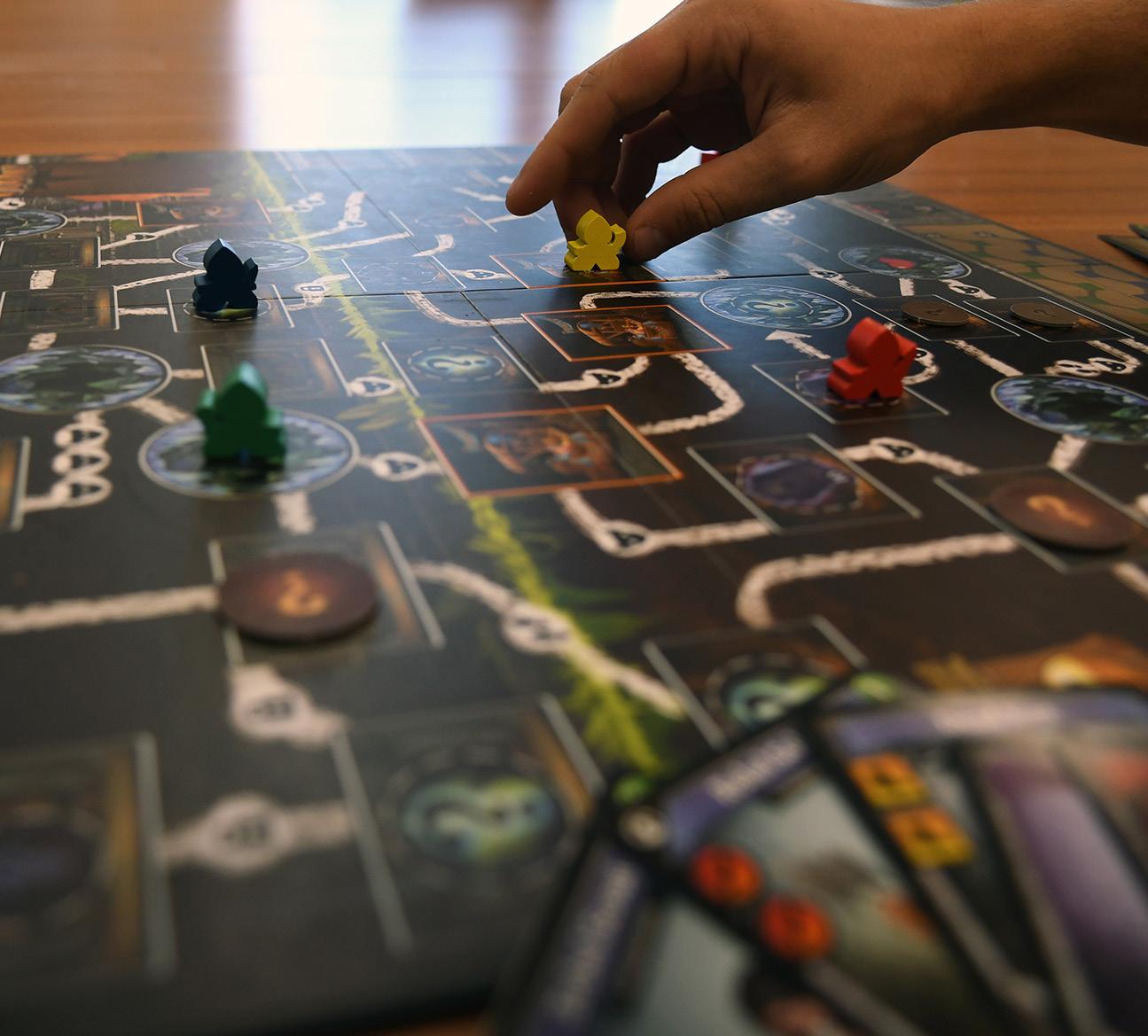

Plainswalkers game on
u By Mackenzie Dahlberg Reporter
COVID has been the leading discussion point for many months and the number of questions concerning the virus seems to be rising.
While the virus has affected both spring and fall semesters and the classes within them, clubs on campus are undergoing discussions to try and work with the guidelines put in place by the college and state. The Plainswalkers Society is one of them.
For a club that is known for their variety of social opportunities, mainly gaming, maintaining things like social distance will be difficult but necessary to encourage.
“We simply exist to give people a social club where they can be comfortable exploring some of their more nerdy hobbies with like-minded people,” club member William Atnip, 21, junior of Lander, Wyoming, said, “The great thing about being a student-led club is we are always adapting and changing to meet the needs of our members.”
There is a set game night every Thursday at 7 p.m. in the Hub, the first one being set for tonight. There is a variety of games available to play at location, but they will be available to check out for 24 hours due to COVID concerns. The club will supply board games, Warhammer, terrain building, card games, video games, Magic: The Gathering, and more.
While the group is known for games, they also host things like art nights, movie nights, and other student led activities.
In previous semesters, Plainswalkers Society ran many events, including D&D campaigns, Mario Kart/Smash Bros tournaments, Art Nights, and other game related events. The club has also assisted with other events and co-sponsored with other clubs. They were involved with the haunted house, co-sponsored Casino Night, helped with

MLK Day events, and other smaller programs.
In this time of uncertainty, Plainswalkers Society plans to continue being present on campus while they also accommodate as best they can, keeping the health of each student a priority for their events.
To do this, the club plans to limit indoor events, and to hold events outside whenever they can. They will create a discord server and a check-out system for remote gaming, as well as sanitizing game pieces, brushes, remotes, etc. They plan on limiting Magic Drafts to a maximum of 20 people. All their snacks will be in individual packages, they will have hand sanitizer available at all events, and Thursday game night will not exceed half occupancy of the Hub. With these regulations, Plainswalkers Society will follow all other CSC and Nebraska guidelines, changing whenever necessary to accommodate the changes in guidelines.
Lifestyles
Laure Sinn, Rangeland Program Coordinator, admires Marine uniforms from World War II at the Mari Sandoz Center Sept. 1. The center’s commemorative exhibit features a wide array of antiques and momentos from the war. SANDOZ EXHIBIT HONORS WWII

u Story and Photos by Chase Vialpando Lifestyles Editor
When you enter the Mari Sandoz Center these days, you are greeted by a glass display case lined with glinting military medals. A few feet away, dozens of colorful, antique World War II pillowcases cling to a wall. Empty uniforms from each military branch occupy several other cases. The war memorabilia varies in nature, but each piece serves a uniform purpose – to tell the story of Nebraska’s involvement in World War II.
The Mari Sandoz Center is hosting an exhibit to commemorate the 75th anniversary of the end of World War II, which was Wednesday. The war officially ended Sept. 2, 1945, when Japanese officials signed formal surrender documents with the U.S. aboard the USS Missouri.
Holly Counts, a Mari Sandoz Center worker and Mark Hunt, CSC Security Supervisor, collaborated to put together the exhibit.
Counts guessed that there were over 500 pieces in the temporary display donated from over a dozen Nebraska collectors. Most of the memorabilia came from Hunt’s personal collection though, which he said numbers in the thousands.
Hunt said he began his extensive collection in the 1980s after his grandfather passed away.
“I received a little box that had some of his patches and medals in it from when he served in World War II. That kind of started the interest,” he explained.
Hunt then sought out flea markets, garage sales, antique A newspaper clipping from 1945 announcing the end of World War II lays on display at the Mari Sandoz Center.
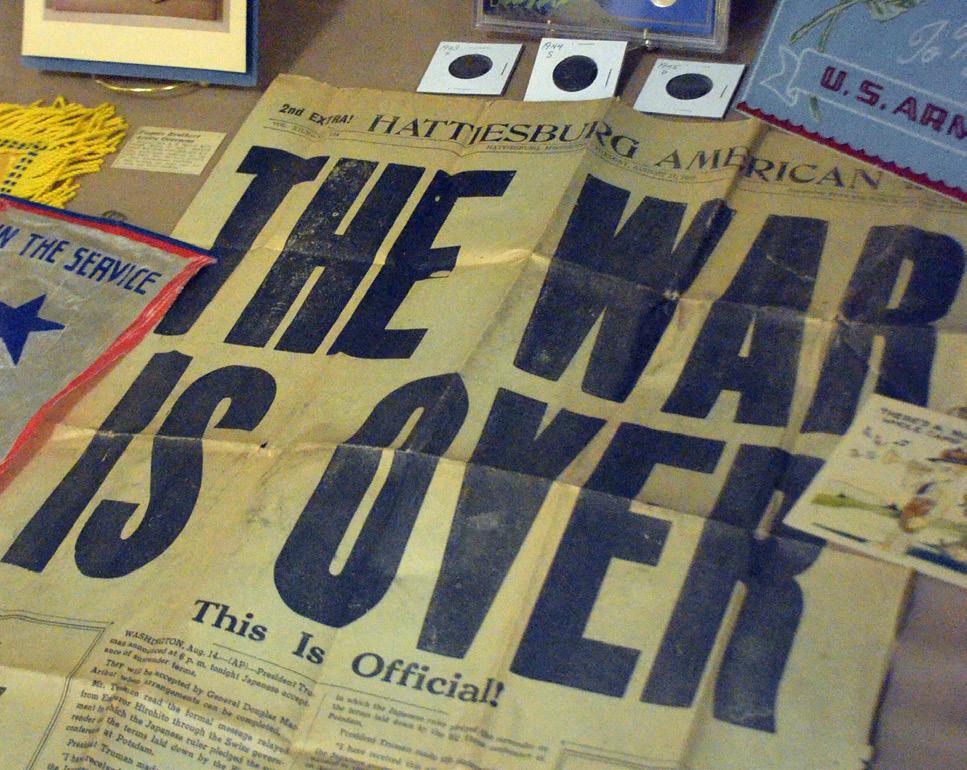
stores and other avenues at which he could expand his collection.
“By the time I got married,” Hunt chuckled, “I had a tub full of patches. My wife basically said ‘Figure out what it is or get rid of it’. That kind of started the research part of it.”
Hunt said that, during his decades-long career as a highschool history teacher, he’d often incorporate pieces of his collection in his lessons.
Throughout his years collecting, Mark explained he’s learned extra history and personal accounts from people.
“Today though, everybody thinks online is where you find stuff,” he said. “That’s not the fun part, the fun part is going to antique stores, asking people if they have stuff. It makes it mean more to you.”
Hunt described the importance he places upon remembering the past through collecting antiques.
“I always tell people that I’m just the owner of (a piece) now,” he said. “When I pass away it goes to my son, who is teaching history. So we’re just watching it for our time until it’s someone else’s turn.”
Hunt explained that he and Counts were very careful about which pieces they chose for the commemorative collection, and that they didn’t want to glorify violence.
“We had talked to V.P Powell to make sure we were all on the same page,” he said. “We didn’t want to bring pieces in and have people be offended by a Nazi symbol or something like that.”
Counts and Hunt both said they hope the exhibit helps shed light on Nebraska’s crucial contributions to the U.S. World War II efforts. The exhibit even includes a wall-sized map of Nebraska detailing the various World War II military camps, ammunition bases and other military posts from the war.
You can see the exhibit until Sept. 25 every Monday to Thursday from 10 a.m. to noon and 1 to 4 p.m., Friday from 10 a.m. to noon and Saturday 10 a.m. to noon and 1 to 3 p.m.
“We have to remember our history to be prepared for our future,” Counts urged. “We really need to see where we came from on this, as a state and as a people.”
Lifestyles
Rows of World War II medals line a glass display case at the Mari Sandoz Center. The exhibit will continue until Sept. 25.

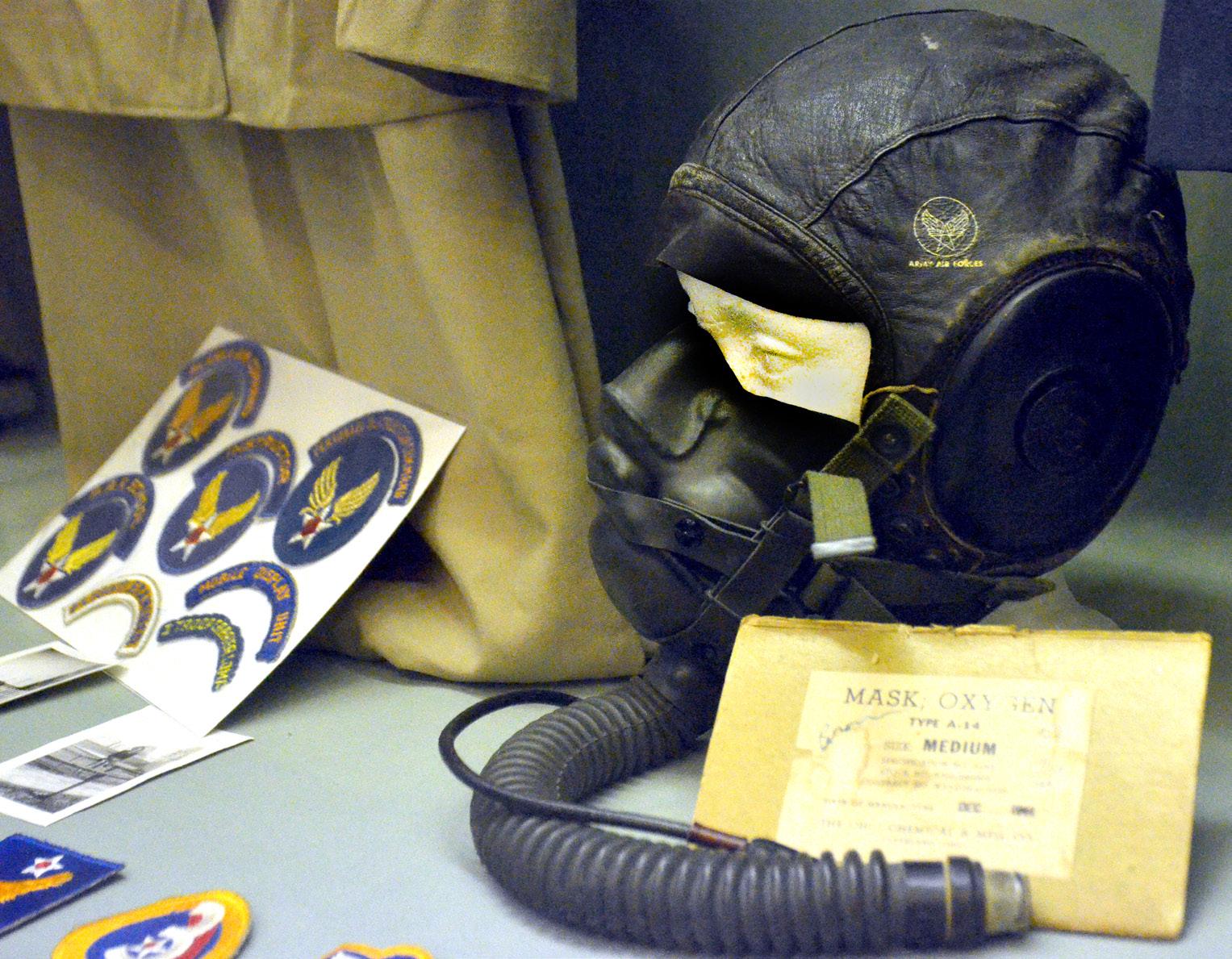
Various colors of World War II pillowcases from some of the military forts around the Nebraska area adorn a wall at the Mari Sandoz Center.


““Today...everybody thinks online is where you find the K K K stuff. The fun part is going to antique stores, asking people if they have stuff.
It makes it mean more to you. - Mark Hunt, CSC Security Supervisor


